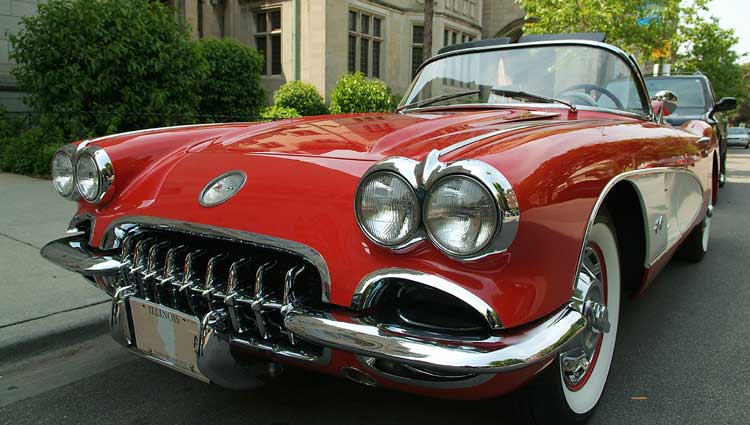Don’t Keep Them Bottled Up!
Some of you who never read Forbes Magazine might think it’s just a stuffy business periodical designed for men in gray suits who dream in pie charts. But how stuffy can a magazine really be when it runs a glowing feature on “investment-grade” Scotch whisky?
That’s right. Investment-grade. As in, the kind of Scotch that doesn’t go in your liquor cabinet so much as your portfolio. Because apparently, in today’s world, a bottle of booze might outperform your 401(k. And with dollar values per fifth reaching into the five and six figures, what nonprofit wouldn’t appreciate a donation of such a very special bottle of, shall we say, “liquid assets”?
The Fine Art of Gifting Booze (No, Really)
When canny marketers decide to pull the cork on high-end snob appeal, the sky’s the limit — at least for them. Me? My personal Scotch budget caps out at $45 a bottle, and only if I’m feeling especially flush or it’s payday. But the players in this new savory game usually add a couple extra zeroes to so minuscule an amount that it might as well be lint.
And they’re a perfect example of the kind of collectible gifts you, dear fundraiser, should not only accept at your nonprofit, but actively encourage. Because if someone wants to give you a tax-deductible bottle of Glenfiddich that could double as a down payment on a Tesla, well, you’d better have a nice display case — or at the very least, a strong lock on your wet bar.
Padlock Your Wet Bar
Let’s get specific. Here’s a little taste (pun intended) of just how outlandish — and delicious — this world can get.
Take the Annie Liebovitz Scotch Collection, for example. Yes, that Annie Liebovitz. The one who photographs celebrities in flowing gowns and tortured lighting. For a mere $2,750, you not only get a bottle of Scotch, but also a limited-edition print by the legendary photographer. Imagine sipping your Scotch under the soulful gaze of a black-and-white print of Patti Smith, while contemplating how your nonprofit can turn booze into an endowment.
Other more “robust” examples:
- Macallan 1926 Fine and Rare – $75,000
- Dalmore ‘64 Trinitas – $160,100
- Glenfiddich 1937 – $71,700
And no, those aren’t typos. That’s not the value of a case — that’s per bottle. It makes your cousin’s “top-shelf” $38 bottle of Glenlivet look like Capri Sun at a frat party.
Back in 2012, traffic in such tasty trifles was up 550% over 2008, and according to Andy Simpson, founder of Whiskey Highland (which sounds like either a hedge fund or a Netflix crime series), the top 250 bottles delivered 206% appreciation over that four-year period. If your retirement portfolio looked like that, you wouldn’t be reading this article — you’d be on a yacht off Sardinia sipping from a bottle of that Dalmore ‘64 Trinitas.
And if you’re looking to take your obsession to new heights — or depths, depending on how you frame it — there’s always New York’s “1494” whiskey club, where a collector’s membership runs a modest $25,000. As Forbes says (probably while swirling a Glencairn glass), “And if the rare-whiskey market should collapse? Just drink your losses.” Try that with your crypto portfolio.
A Toast to Fundraising Relevance
Now before you lunge for your rolodex in search of your wealthiest alcoholic donor, take a deep breath. The real point here isn’t to build your organization’s next capital campaign around single malts (though let’s admit, that would be fun). It’s to recognize that gifts of personal property — appreciated “stuff” — are a seriously underutilized goldmine for fundraising.
Because let’s face it: donors are sitting on a mountain of high-value personal property, most of it collecting dust — or accruing storage fees — and they’d often love nothing more than to make it someone else’s problem in a tax-efficient way. That “someone else” could be you.
Sure, a Glenfiddich ’37 might be a stretch. But how about:
- A 1955 Corvette gathering cobwebs in a suburban garage?
- A piece of original artwork too large for the donor’s new minimalist condo?
- The world’s second-largest collection of porcelain frogs (the first-largest, obviously, already lives at the Smithsonian)?
- A vintage sailboat that hasn’t seen the water since the Clinton administration?
All of these — and more — can be transformed from burdensome belongings into major gifts. Just make sure your development office knows how to handle the paperwork, and preferably doesn’t have a fear of amphibians.
Ask the Expert: Insights from the Late Brian Sagrestano
To make sure we’re not just talking out of our Glencairn glasses, I turned to someone who actually knows what he’s doing: Brian Sagrestano, who specializes in complex gifts and doesn’t bat an eye when the conversation turns to art, autos, or ancient alcohol.
Here’s what he had to say:
“Any asset can be donated. The question is whether it can be deducted. But I work on gifts of highly appreciated collectibles all the time. Say the donor has an asset, like a bottle of wine, which is highly appreciated. The donor has it appraised and then donates it. The deduction is based on a qualified appraisal unless the charity cannot use the asset for a purpose related to its charitable mission (this is called the ‘related use rule’). But in positive-speak, if the charity can use it for a purpose related to its mission, deduction is based on the appraisal. If the charity cannot, deduction is limited to the donor’s cost basis (what the donor paid for it).”
Translation: If your museum receives a vintage typewriter used by Hemingway, you’re golden. If your cat shelter gets a signed Picasso… well, it’s still great — just don’t expect the donor to get full deduction credit unless you’re planning to hang it in the kitty lounge.
The “Related Use Rule,” or How to Keep Your Sailboat from Sinking Your Tax Strategy
Brian’s explanation hinges on what’s known as the “related use rule.” Basically, the IRS doesn’t want donors dumping off random valuables at nonprofits just for the tax break unless the gift somehow fits the mission. If it does, the donor can deduct the fair market value as determined by a qualified appraisal. If it doesn’t, they’re stuck with deducting their cost basis — essentially what they paid for the item.
So if your university’s oceanography department receives a vintage sailboat and actually uses it in student research? Jackpot. But if that same boat is donated to your neighborhood food pantry, well, it might raise some eyebrows (and possibly sink your deduction hopes).
In other words, while you can donate anything, not all gifts are created equal — especially in the eyes of the IRS, who, as we know, don’t exactly specialize in whimsy.
But Seriously… Start Asking for the Good Stuff
Humor aside, this is serious business. Gifts of appreciated personal property — fine wine, rare books, collector cars, vintage guitars, you name it — represent an enormous untapped opportunity for both donors and nonprofits. And in an economy where cash is tight but collectibles are booming, getting savvy about this category could help your organization leapfrog past its competition.
You don’t need to become an expert in whiskey or vintage Corvettes. You just need to know enough to ask. Develop a gift acceptance policy that includes collectibles. Get familiar with IRS Form 8283. And have a qualified appraiser or two in your Rolodex.
And don’t assume your donor has to be a billionaire. Plenty of people — teachers, dentists, retired naval officers — have basements full of stuff that’s worth more than their stock portfolio. One man’s dusty storage unit is another nonprofit’s windfall.
Bottom Line?
If someone offers you a bottle of Glenfiddich 1937, say thank you, then call your gift planning office and your lawyer — in that order. Or better yet, build a program that encourages gifts of all appreciated assets — not just stock and real estate, but the weird and the wonderful.
As Forbes said about investment-grade Scotch:
“If the rare-whiskey market should collapse? Just drink your losses.”
And that, my friend, is the kind of risk tolerance we can all get behind.
Cheers. 🥃 (Figuratively, of course — you’re still at the office.)



